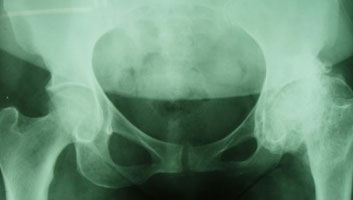
Article written by:
It was only four years ago seemingly every decent player at both elite and local level was suffering from some degree of the dreaded Osteitis Pubis.
Right now, there are fewer than five in total listed on the AFL injury list as having Osteitis Pubis. So what has changed?
Most obviously, the advent of high volume rotations by coaching staff, the realisation that high level endurance training was often taken with more risk than reward and the increase in acceptance that core stability is where a strengthening program should start are all factors which have reduced the incidence of overloading the pubic symphysis and ‘contracting’ OP. In sports medicine terms however, the focus has switched from the area of pain in OP (the pubic symphysis) to the hip joint as the likely culprit underlying excessive pubic symphysis stress.
When I started as a physiotherapist in 1999, most groin injuries were called adductor tendinitis. They then discovered problems with the pubic symphysis was often underlying that condition and now we have the revelation that changes or abnormalities within the hip joint can underlie OP type conditions. Certain scans are better than others at identifying each part in those players affected, although often a plain old x-ray is not a bad starting point.
A quick scan of the current AFL lists reveals that on average at least four players at every club have been assessed as suffering an injury within the hip joint and the majority of those have gone on to a hip joint arthroscopy. This procedure is effectively designed to clean out any loose cartilage or ligament debris within the joint. In a large number of players however it has also been found that the actual shape of their ball and/or socket is not normal and so these bony abnormalities are shaved back to resemble more normal contours at the time of the arthroscopy.
This recognition and ability to deal with hip joint problems has played a significant role in reducing the incidence of OP along with those other factors mentioned above.
Rehabilitation from hip joint injury or surgery is also becoming more specialized and involves identifying particular muscles which need to re-engage and then planning a guided return to sport. At Corio Bay Sports Medicine Centre we have a viewing Ultrasound machine which we use with hip patients to help them see the deep muscle affected and teach them how to correct any imbalance.
